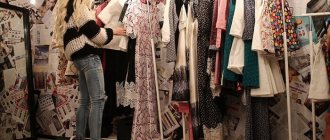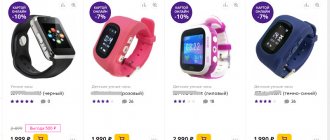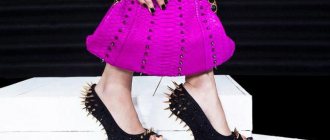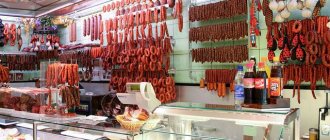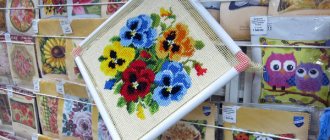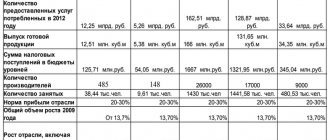The main trends in children's retail were outlined by major market players at the XII All-Russian Trade Forum “Supplier of Children's Goods”.
In 2020, the rationalization of consumer behavior will continue, the role of spontaneous sales will decrease, and the market will seek a balance between supply and demand. Specialized chains of children's goods are forced to compete with family department stores, and the decline in the birth rate and the “childhood” age for traditional toys is increasingly provoking the market to search for new approaches and “growth points.” In this regard, short-term drivers of consumer activity are essential goods, promotional products and private labels. In this article we will talk about 8 main trends that have emerged in the new economic reality.
The flow of customers from specialized stores to hypermarkets
53% of parents buy children's goods in supermarkets and hypermarkets, where prices due to promotions and special offers are often lower than in specialized stores, says Nikita Glazkov, leading analyst at RBC Market Research. Understanding this trend, hypermarkets began to actively expand their departments with children's toys. Alexander Bondyashov, head of the Daughters of Synochki Group of Companies, believes that hypermarkets will soon become serious competitors in this market segment. According to his calculations, toys occupy an average of 600–800 square meters. m of area of a large hypermarket such as Auchan and Globus; on holidays this figure increases to 2.5 thousand sq. m. m.
Not all forum participants agree with the opinion of the head of the Daughters-Sons chain: Maria Vanifatova, CEO of NPD Group Russia, a company that has been studying the toy market in different countries for more than 20 years, believes that hypermarkets in Russia lag significantly behind their own in selling toys Western colleagues. Purchases at such retail outlets are often impulse in nature; consumers tend to save on such purchases.
“Daughters-Sons” store in the Columbus shopping center
OKVED codes for retail trade in children's goods
Toys, strollers and cribs:
- 47.65 Retail trade of games and toys in specialized stores
- 47.19 Other retail trade in non-specialized stores
- 47.59 Retail trade of furniture, lighting fixtures and other household products in specialized stores
- 47.64 Retail trade of sports equipment and sporting goods in specialized stores
- 47.78 Other retail trade in specialized stores
Baby food:
- 47.29.36 Retail trade in homogenized food products, baby food and diet food in specialized stores
- 47.11 Retail trade primarily in food products, including drinks, and tobacco products in non-specialized stores
- 47.29 Retail trade of other food products in specialized stores
- 47.29.39 Retail trade of other food products in specialized stores, not included in other groups
Cosmetics, perfumes and chemistry:
- 47.75 Retail trade of cosmetics and personal hygiene products in specialized stores
- 47.78.9 Retail trade in non-food products, not included in other groups, in specialized stores
Cloth:
- 47.71.1 Retail trade of men's, women's and children's clothing in specialized stores
- 47.71 Retail trade in clothing in specialized stores
- 47.72 Retail trade of footwear and leather goods in specialized stores
Bags, etc.:
- 47.72.2 Retail sale of leather goods and travel accessories in specialized stores
Radio nanny, etc.:
- 47.43 Retail trade of audio and video equipment in specialized stores
- 47.42 Retail trade in telecommunications equipment, including retail trade in mobile phones, in specialized stores
Bijouterie:
- 47.51.2 Retail trade of haberdashery products in specialized stores
Other:
- 82.92 Activities for packaging goods
- 49.41 Activities of road freight transport
- 49.42 Provision of transportation services
- 52.10 Warehousing and storage activities
- 53.20.31 Activities for courier delivery by various modes of transport
- 74.10 Specialized activities in the field of design
- 96.09 Provision of other personal services not elsewhere classified
Buyers focus on promotions
The share of promotional turnover for hygiene products and diapers is 48.9% in 2020, which is 5.4% higher than in 2020, according to GfK Rus. In general, for 59% of the population, promotions and sales of children's goods became a signal to buy, 36% of parents pay attention to promotions, but buy if they liked the offer, says RBC Market Research.
In total, almost the entire market audience follows special offers and sales in one way or another; people began to plan their purchases, compare prices and buy where it is more profitable. In 2020, parents tend to save on clothes for children (this category dropped by 13% in ruble terms) and on toys (-5%). Growth is shown by baby food (+3%) and child care products (+5%), notes GfK Rus.
How to open a children's clothing store
And so, the first thing you need to do to open your own children's clothing store is to officially register it.
To do this, you need to choose the form of business ownership under which you will operate.
The best options for opening a children's clothing store are:
- IP – individual entrepreneurship;
- LLC is a limited liability company.
If you are just taking your first steps in business, then I recommend opening an individual entrepreneur. This is the simplest form of business ownership and, as is clear, it is the easiest to work with: state duties are cheaper, there are fewer reports, fewer fines and penalties, and, more importantly, an individual entrepreneur can use a patent taxation system (but more on this below in the text).
Regardless of what form of ownership you decide to choose, you will need types of activities from the OKVED classifier; in 2020 we still use the old OKVED 2001.
Type of activity for retail trade of children's clothing:
52.42.1 -
Retail trade in men's, women's and children's clothing.
ATTENTION! On July 11, 2020, the new OKVED 2014 classifier came into force and now types of activities must be taken from it!
In order to start your own business selling children's clothing, this type of activity is quite enough, as you probably noticed, in addition to children's clothing, you can also sell both women's and men's.
This type of activity will be required when filling out an application for registration of an individual entrepreneur.
The stratification of the children's toy market will intensify
In 2017-2018, the stratification of the market into high-price and low-price segments will continue, and the middle segment of toys will decline, says Maria Vanifatova. The low-price segment of the market is actively growing, 60% of all toys purchased in Russia cost less than 500 rubles, the share of Russian manufacturers in this segment is 20%.
However, not all market players agree with this; Evgeniy Butman, Chairman of the Board of Directors of IDEAS4RETAIL (Imagimarium, Hamleys, Cook House chains) and Chairman of the Board of the National Association of Chain Trade Participants believes that the growth of the low price segment is a purely opportunistic phenomenon and is associated with price fluctuations with the ruble to dollar exchange rate.
Demand for goods for newborns and children over 10 years old will fall
By 2020, according to ROSSAT, the birth rate will fall by 7.8%, which will affect products for newborns. At the same time, the “children’s age” is also decreasing - if previously traditional toys were bought, relatively speaking, until the age of 14, now this age has dropped to 10 years, then gadgets “come into play,” says Maria Vanifatova.
It turns out that the retail of children's goods is, as it were, sandwiched between two planes - on the one hand, a decrease in the birth rate, on the other, a decrease in the age at which children play with traditional toys. This fact is confirmed by Evgeny Butman, noting that the space for traditional children's retail is becoming narrower.
Income of a children's clothing store
Here I have two good news for you:
- Children are constantly growing
. So the child’s wardrobe changes every year, and if the buyer has a good impression, then next year he will come to you to purchase larger sizes; - High margins
. Or in other words, a markup on clothing, its size from 100% to an indecent 500%.
Both of these factors make the children's clothing business especially attractive. At the same time, children's clothing is purchased regardless of the season.
As for the income of a children's clothing store, there is only one - this is the direct sale of goods.
We have highlighted that the first purchase of goods will be 500,000 rubles, if we take the average markup of 200%, then theoretically you will have goods worth 1,500,000 rubles in your store.
Having goods for this amount, you can ideally sell 1/3 in a month, that is, for 500,000 rubles.
And now I will disappoint you a little, initially you will not have such sales and only after some time you will be able to reach this level.
Now let’s determine how much money we will have to return from this amount to replenish the assortment: having sold 500,000 per month with a markup of 200%, the cost of the goods will be about 167,000 rubles, and the profit from sales will be 333,000 rubles.
The segment of anti-stress toys is developing, with a general reduction in the life cycle of the toy
A new segment has appeared in the children's goods market - anti-stress toys, and a prominent representative of this segment is the spinner. The product reached its sales plateau in 4 weeks thanks to social networks; no new product has been able to reach its peak so quickly. Fidget spinners have become the most popular among teenagers, which is logical, because they have “grew up” from traditional toys, but the need for games remains.
Despite its rapid rise, the popularity of the spinner fell just as quickly, this is due to the general trend of shortening the life cycle of the toy. From a technology point of view, manufacturers have learned to produce toys faster; they have to respond to the constant interest of consumers in new products.
What pushed me to find myself in the world of business
Good day, dear readers. My name is Ivan. Before I tell you in detail about how I became a real entrepreneur, I would like to share a little about what pushed me to find myself in the world of business.
We live in a town far from civilization
I live in a small northern city, far from the noisy and actively developing world, whose population does not exceed 60 thousand people.
Our city is poor in all kinds of entertainment and variety of leisure opportunities. Sometimes locals call it a city of pharmacies, pubs and Coins (not advertising).
This is because people live here solely to earn money, otherwise why else would they spend most of their lives in conditions of permafrost, the poorest nature and a nine-month winter, constantly arriving in dreams of leaving these places “fabulously” rich. So, active entrepreneurs choose to make money on the most common human needs: eat, drink and not get sick.
My wife came up with the idea without even knowing it.
IM married. My wife did not find another “favorite” job for herself, except as a nanny in a kindergarten. She loved her job so much that it hurt her teeth. Often, when she came home from work, she told me about a “great” day, and she told me in such a way that I felt guilty of all mortal sins. One very fine day, picking her up from work, we walked along the main street home.
My wife said, seeing mothers with their children in strollers: “They pestered me at work, and even surrounded me here! Look how many there are!” That's when it dawned on me. This is a goldmine!
There are a lot of children in our small town.
I really never noticed that there are so many of them (mothers with strollers and bellies like watermelons) in such a small city! I wondered: where do they wear them? After all, every mother wants her child to be more beautiful, more fashionable, and more interesting than the other.
I analyzed the children's goods market
I began to analyze the market for shops with children's things. The prices offered by local merchants honestly surprised me unpleasantly. For the money that can be used to dress a small child, you can easily dress an adult man. I began to wonder how the entire trading process in general and separately for this category of goods was structured. And this is what I managed to find out in the shortest possible time:
- the goods, basically, are all brought from the wholesale markets of the city of Yekaterinburg (geographically the closest of the fairly developed ones in relation to our town);
- markup on goods is, in most cases, 2.5 times the purchase price on the basis that one part is for a new purchase, the second is net profit, and the third half is third-party expenses associated with the payment of rent, taxes and other costs;
- The competition in our city is small (as I initially thought), namely 3-4 points in the markets and a couple of boutiques with “astronomical” prices.
The role of family department stores in the children's segment is increasing
Family department stores that operate according to the trefoil system are actively developing, for example, H&M, GAP, MANGO. It is believed that the main buyers of such stores are women, and the assortment is built in such a way that women can buy goods for themselves, children and for their men.
Thus, such department stores, which sell clothes for all family members at once, began to create competition for specialized children's stores.
Alexander Bondyashov, head of the Daughters-Synochki Group of Companies, confirms the presence of this kind of competition in the market, citing the example of the Gloria Jeans retail chain, which is actively developing towards expanding the range of children's clothing and increasing the area of stores by more than 2 times.
The result of all of the above
First, if you want to get into trading, don't look at other people's prices. You came to the market not to imitate them, but to create fierce competition. You will be able to earn more efficiently with a quick turnaround, and your competitors will be left out of business. So don't be afraid to sell low, be afraid not to sell.
Secondly, create the most comfortable conditions for your potential buyer, do not skimp on helpfulness. Put yourself in his place, and you will easily find an approach to the buyer.
Also read: Franchising - how to open your own business and not go broke.
Well, thirdly, don’t give up, which I almost did, because if you try, you will have two possible outcomes: either it will work out or it won’t. And if you don’t try, then the outcome is the same. All the best and financial prosperity!
Children's products go online
50% of sales of the OLANT children's goods chain come from the online store, and this is no coincidence: the company builds communication with the buyer in such a way that the maximum number of sales comes from the online channel. At the same time, 77% of buyers want to come to traditional stores, regardless of whether a purchase is made or not. Olga Teslya, General Director of OLANT, notes that, despite their priority being online, the network is also developing offline stores, “twisting” both channels into a single omnichannel system.
The delivery method has also transformed; a phenomenon such as Click&collect (In-Store pickup) has emerged, when the buyer places an order online and picks it up in a physical store.
According to Maria Vanifatova, the Internet is the most growing sales channel in the children's toy segment; in Russia it occupies a 6% share. At the same time, in the USA the share is higher - 22%, and in Europe - 30%, Russian retail has room to grow. “The tone in the market is set by omnichannel companies, where online is tied to the overall digital strategy, and in its pure form, online retail does not play a significant role in the children’s segment,” says Evgeniy Butman.
My observations and conclusions about the sale of children's goods
A couple of weeks passed, and I began to try to analyze what went wrong. I began to ask the mothers I knew what was missing in our business in their opinion, to observe those who continue to work in the market and their rare customers. And this is what I managed to come to. In the field of selling children's things, you need to put yourself in the buyer's place, and then everything becomes elementary:
- Mothers who are walking in the market with their children are very tense as most children require a lot of attention due to their restlessness in crowded places. And as a result, they cannot, even for five minutes, stop at the counter and look at things;
- Everyone is attracted by the lowest possible prices, at which they are ready to buy in huge quantities, not realizing that the final amount will be as large as desired;
- Buying clothes for a child requires fitting, because each child has an individual body composition. But undressing a bundled-up baby at the market, and then dressing it, takes nerves of steel.
That is why, as I decided, our business did not work out. I was right, and here is the logical chain that I built for myself with the help of others:
- It is most convenient to consider and choose things for the child when he is sleeping and does not bother his mother. And this is only at home at lunchtime and at night;
- It is also convenient to try on things only at home, where the child can be comfortably placed on the sofa, for example;
- It is necessary to abandon the rule of 2.5 times markup, because it is better little and often than a lot and once.
Development of a unique product proposition (USP) and private brands (private brands)
In 2020, the growth of large-sized goods for children is primarily due to private labels, their share amounted to 33%. It turns out that every third stroller, car seat, or high chair sold belongs to the retailer’s own brand. More than 60% of the assortment of the Leonardo hobby hypermarket chain consists of private labels (from raw materials to packaging) and those goods that are created specifically for this chain in different countries of the world. “We think that it is advisable to develop private labels and our own production, and we are moving in this direction,” says Boris Katz, development director of the Leonardo hobby hypermarket chain.
Involving consumers in the creation of goods and services is the strongest trend in the global market today, says Vadim Shiryaev, president of the Commonwealth of Business Development Organizations. As a result of such interaction, very competitive products are obtained, the expert notes.
In general, the children's goods market turned out to be quite stable during the crisis period, compared to other markets, mainly due to the fact that it is difficult to refuse to buy children's goods. At the same time, stabilization and growth of the children's goods market should be expected in the 4th quarter of 2020, says Evgeniy Butman.
